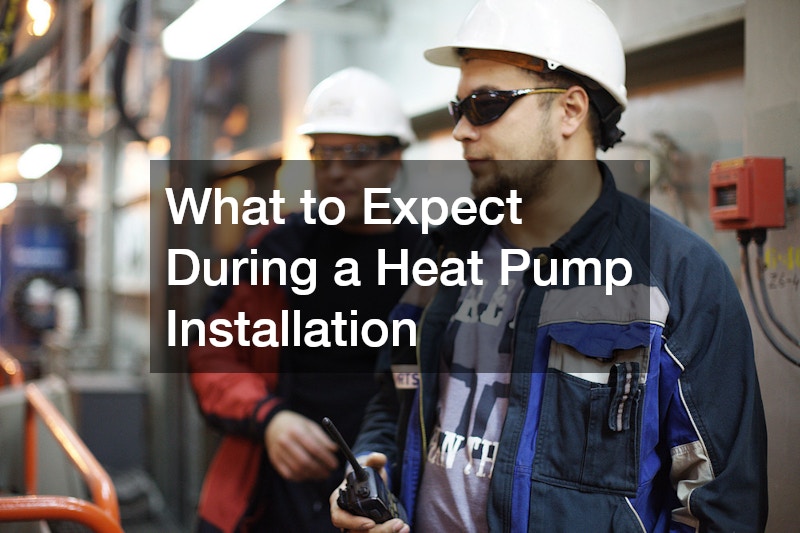
As the demand for energy-efficient home heating and cooling solutions increases, many homeowners are turning to heat pump installations as a sustainable option. A heat pump offers a versatile system that can regulate indoor temperatures effectively in both summer and winter. This article will guide you through the process of what to expect during a heat pump installation, ensuring you are well-prepared for a seamless experience.
Initial Consultation and Assessment
The first step in the heat pump installation process involves an initial consultation with a certified HVAC technician. During this consultation, the technician will evaluate your home’s heating and cooling needs and recommend the best type of heat pump system suited for your property.
This thorough assessment is crucial to ensure that the chosen heat pump can efficiently manage the climate control in your specific living space.
In addition to evaluating your home’s size and insulation quality, the technician will inspect existing ductwork for compatibility with the new system. It is important to assess whether updates or repairs are necessary to optimize the performance of the forthcoming installation. This stage not only helps in making informed decisions but also gives you a cost estimate for any additional work that might be required.
Furthermore, the technician will discuss with you the different types of heat pumps available, such as air-source, ground-source, and hybrid systems. Understanding the benefits and limitations of each option allows you to make an informed choice that aligns with your climate control goals and budget. These discussions also provide an opportunity to address any questions or concerns you might have about the installation process or ongoing maintenance.
Pre-Installation Work and Preparation
Once the consultation is complete, the preparation and pre-installation work can begin. This consists of scheduling a convenient date for the installation and preparing your home to accommodate the new system. Clearing the installation area of any obstructions and ensuring easy access for the technicians will facilitate a smoother installation process.
In some cases, modifications to the existing HVAC infrastructure may be required before the heat pump is installed. This could involve upgrading electrical systems or enhancing the structural integrity of the space where the unit will be placed. Each preparation step is vital to ensure the long-term efficiency and functionality of the heat pump.
Installation Process
The actual installation of the heat pump typically spans a full day, involving meticulous work by a trained team. The process begins with the removal of any old systems followed by the setup of the new heat pump, including mounting the units and connecting them to the ductwork and electrical system. This phase requires precision to ensure optimal operation and safety of the system.
Experienced technicians will adhere to manufacturer guidelines while customizing the installation to meet your home’s requirements. They will also install thermostats efficiently and set up zoning controls if required, to maximize the efficiency of your heat pump system. Their expertise ensures the system is configured correctly and all components work harmoniously.
Certainly, the installation team will conduct comprehensive testing of the system post-installation. They will check for proper airflow, verify thermostat operation, and inspect system functions to ensure everything operates as intended. This rigorous testing phase guarantees that your heat pump installation delivers the comfort and energy efficiency promised.
Post-Installation Maintenance
Following the installation, the next step involves understanding post-installation procedures and ongoing maintenance requirements. It’s vital to engage in a thorough walkthrough with the technicians to ensure you are comfortable with the system’s operations and features. They will guide you on the basic troubleshooting steps and regular maintenance tips to keep your heat pump running efficiently.
Regular maintenance, such as changing air filters and scheduling annual system checkups, can significantly extend the life of your heat pump. Addressing minor issues quickly will prevent more significant problems down the road, keeping repair costs manageable. Proper upkeep will also ensure that your system operates at peak energy efficiency, which is both cost-effective and environmentally friendly.
The process of a heat pump installation is a strategic investment in the comfort and efficiency of your home’s climate control. By understanding each phase of the installation, from consultation to post-installation maintenance, you can ensure a seamless and successful integration of the system into your home. With proper care and professional expertise, a heat pump installation provides a sustainable and effective solution for all your heating and cooling needs.
.

